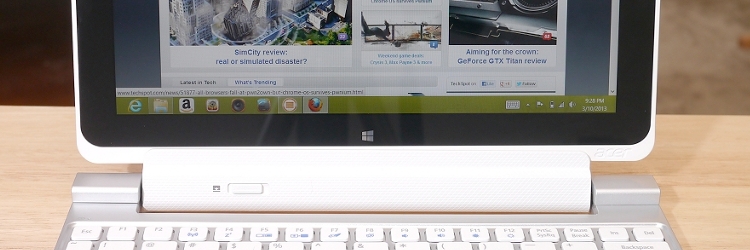It's hard to put into words the impact that mobile technology has had on the computing industry thus far. We're clearly in the middle of an enormous shift, moving from a time when desktop machines and notebook computers dominated the landscape to what's commonly referred to as the post-PC era.
We are already seeing smartphones, tablets and hybrids chip away at the once-thriving PC business. Meanwhile, smartwatches and augmented reality visors are signaling an emerging trend of wearable computing that could start gaining some ground in the coming year. With new forms of mobile devices that we haven't even thought of yet likely on the horizon many have ventured to say that the days of the desktop PC are numbered.
Microsoft's answer to this changing landscape is Windows 8, an operating system that attempts to balance the demands of traditional productivity-oriented desktops with the mobility of, well, mobile devices. Results have been mixed thus far as desktop users have complained about the 'unnecessary' user interface (formerly the Metro UI) while Microsoft's pure tablet implementation - Windows RT - is limited in the software it can run.
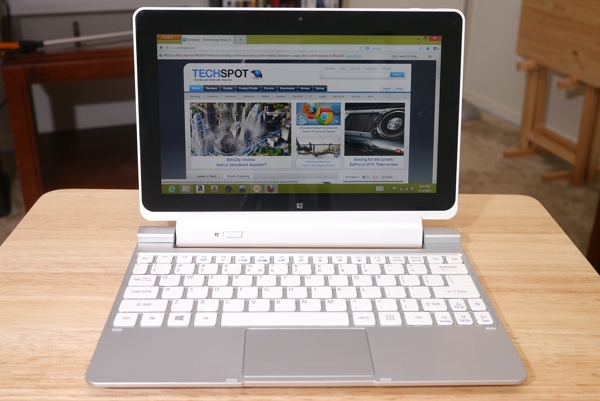
But while Windows 8 might fall short on those two platforms, there's a third category where it seems to fit in just perfectly - hybrids. When you think about it, hybrids are the optimal home for Windows 8 as both aspects of the operating system are in use and get to shine as they were designed to.
That brings us to today as we have Acer's Iconia W510 hybrid up for review. The system is officially marketed as a net-tablet although the included (on select models) keyboard dock essentially transforms the unit into a full-fledged PC - no Windows RT here, folks. What you're getting here is the full Windows experience just like you would have on a traditional desktop or notebook.
Acer's W510 consists of a 10.1-inch Active Matrix TFT Color LCD operating at 1,366 x 768 with full touchscreen support. It's powered by a dual-core, four-thread Intel Atom Z2760 processor clocked at 1.8Ghz, 2GB of DDR memory, 64GB of internal flash storage, 802.11 a/b/g/n Wi-Fi, NFC and Bluetooth 4.0 +HS. There's an 8-megapixel rear shooter with flash as well as a front-facing camera for video chats. Our review sample is priced at $649.99 which includes a full version of Windows 8 32-bit and the aforementioned keyboard dock.
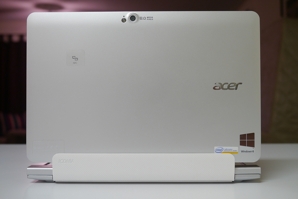
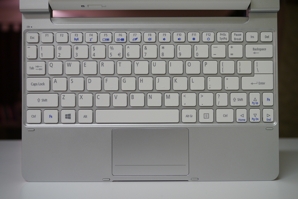
My first impression of the Acer Iconia W5 was that it resembles a netbook both in form and function, with the Atom processor inside and all. Of course that's not entirely a fair assessment as the Intel processor inside this system is a good bit more powerful than the lowly chips that rose to fame during the netbook's brief run.
The tablet itself is one of the more attractive units I've come across. The slate measures 0.3-inches high by 6.6-inches wide by 10.2-inches deep and weighs approximately 1.28 pounds. Looking at it head-on, the 1,366 x 768 display is framed by a black bezel which is then outlined by a white bezel. When holding the tablet in landscape mode, the front-facing HD webcam is centered above the screen with the Windows logo opposite it at the bottom.
Acer Iconia W510 - $650
- 10.1" 1366x768 Active Matrix TFT LCD
- Intel Atom Z2760 (1.8 GHz)
- PowerVR SGX 545 integrated graphics
- 2GB of LPDDR2 RAM
- 64GB SSD
- 1 x microHDMI, 1 x microUSB, 1 x MicroSD
- 802.11b/g/n, Bluetooth 4.0 +HS
- Gyroscope, E-Compass, Accelerometer, Ambient light sensor
- 2MP front, 8MP rear cameras
- Keyboard Dock
- 10.18 x 6.60 x 0.35 inches, 1.3 pounds
Across the bottom we find the docking port and latch connectors. On the left edge is one of two stereo speakers and the Iconia name etched in the white plastic edge. The top edge features a headphone jack, lock orientation switch and the power button. On the right is a mic, volume rocker, microHDMI port and microUSB ports, and a microSD card reader.
The backside of the slate is constructed of aluminum much like Apple's iPad. There's an 8-megapixel camera centered at the top (when in landscape mode) with an LED flash and microphone, presumably for video recording. The Acer name is etched in chrome and you will find a few of those pesky stickers, too.
The included keyboard dock is built using the same silver aluminum found on the back of the tablet. The chiclet-style keys are white with grey and blue lettering. Acer even included a small trackpad just below the spacebar key. Although advanced features like multi-touch aren't supported, that's a minor inconvenience considering the tablet's display includes this same feature.

The keyboard dock is more than just an input device as it contains a battery that, in tandem with the one inside the slate, is reportedly good for up to 18 hours of use. Furthermore, the dock serves as a convenient stand for the display as it's able to tilt up to 295 degrees and there's a full-sized USB port on the right edge.
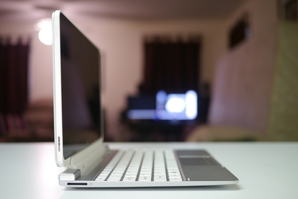
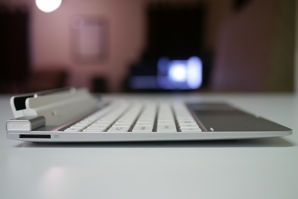
I didn't run into any issues with the layout of the keyboard although it's a bit cramped due to its limited real estate. We can't blame Acer for that but note that extended typing sessions may take some time getting used to.
